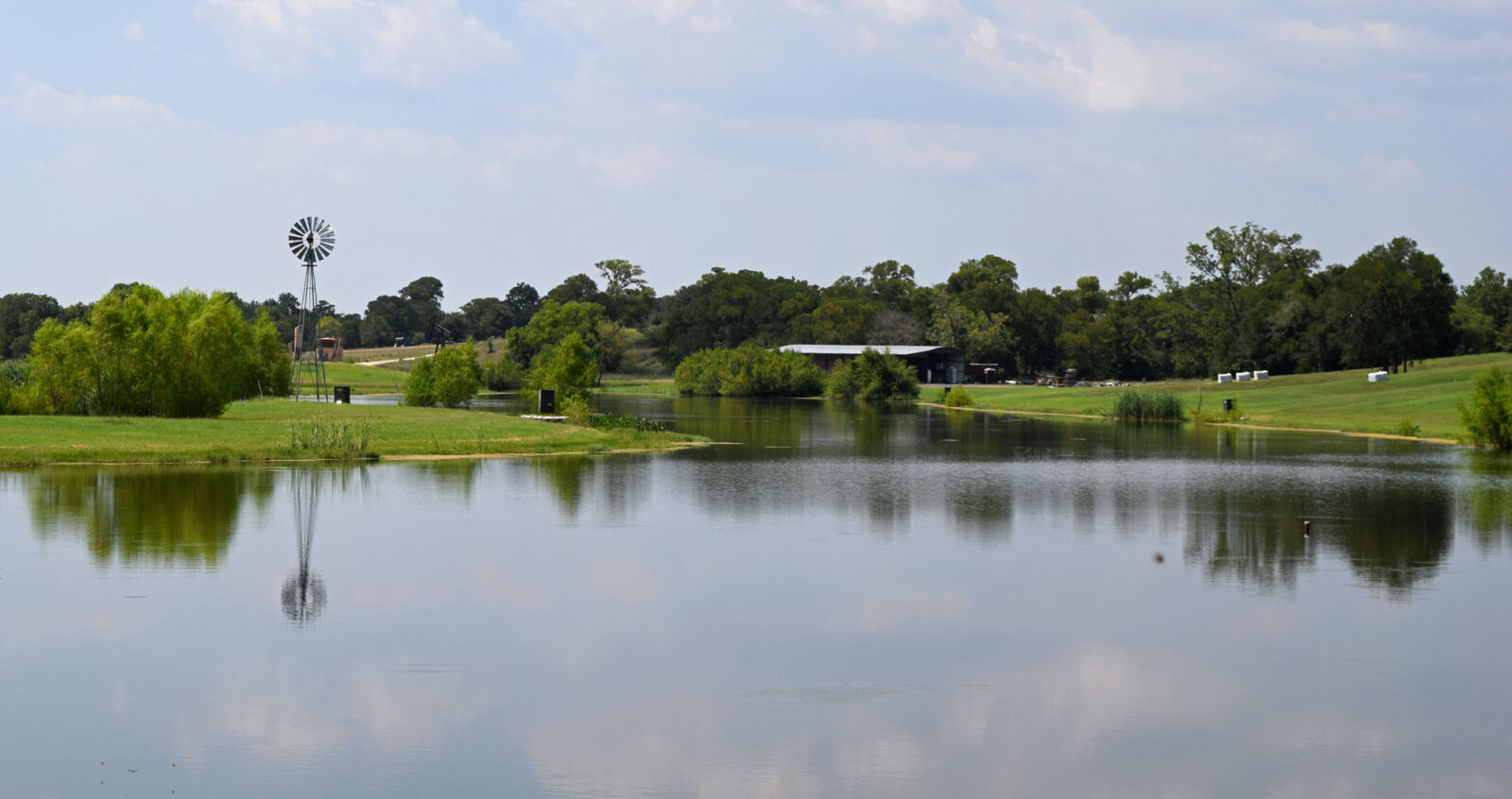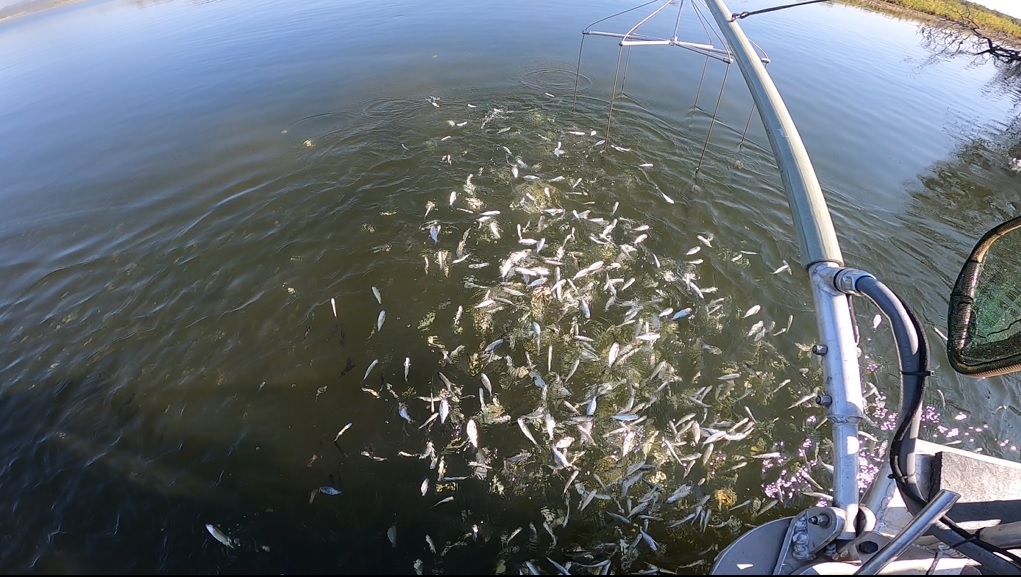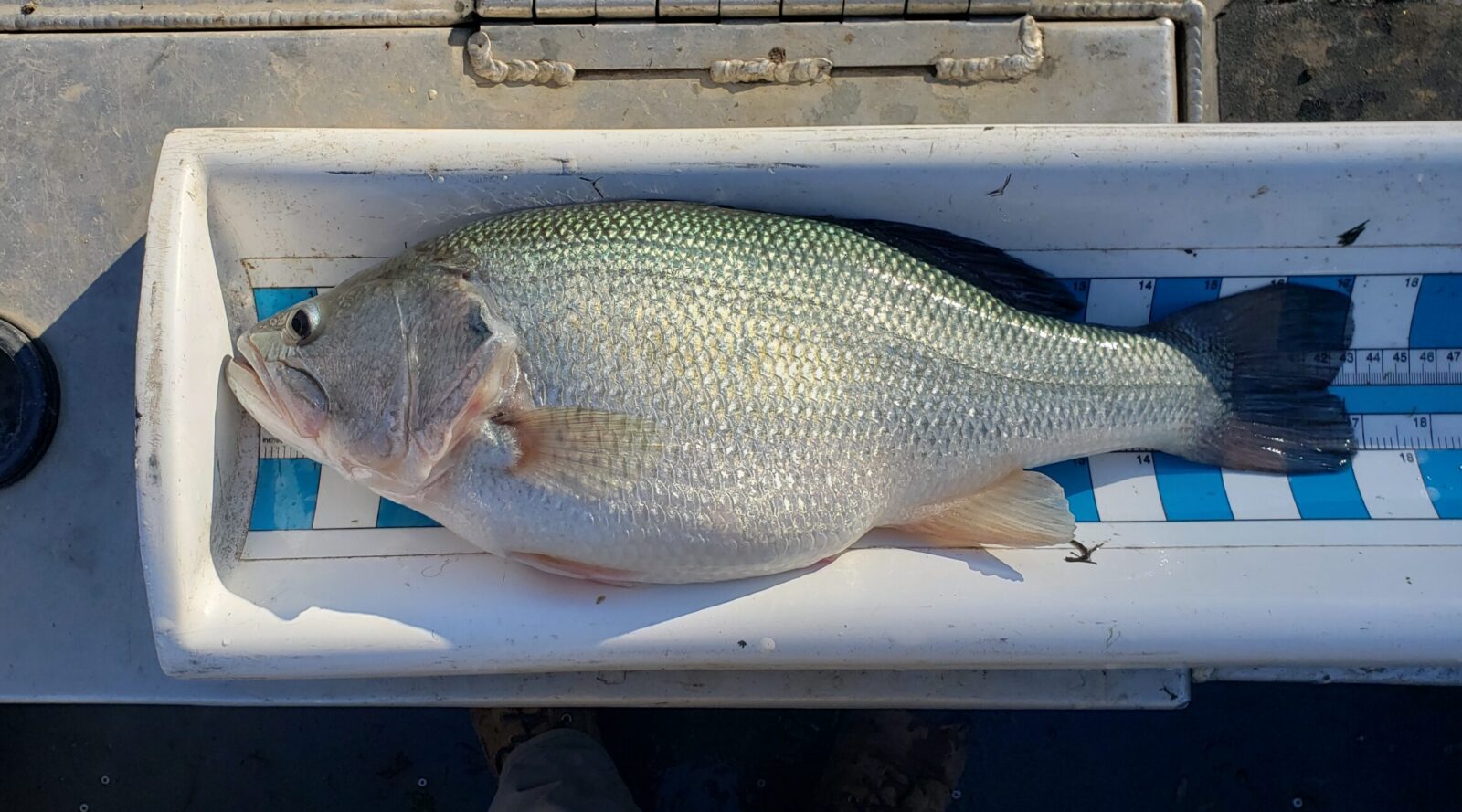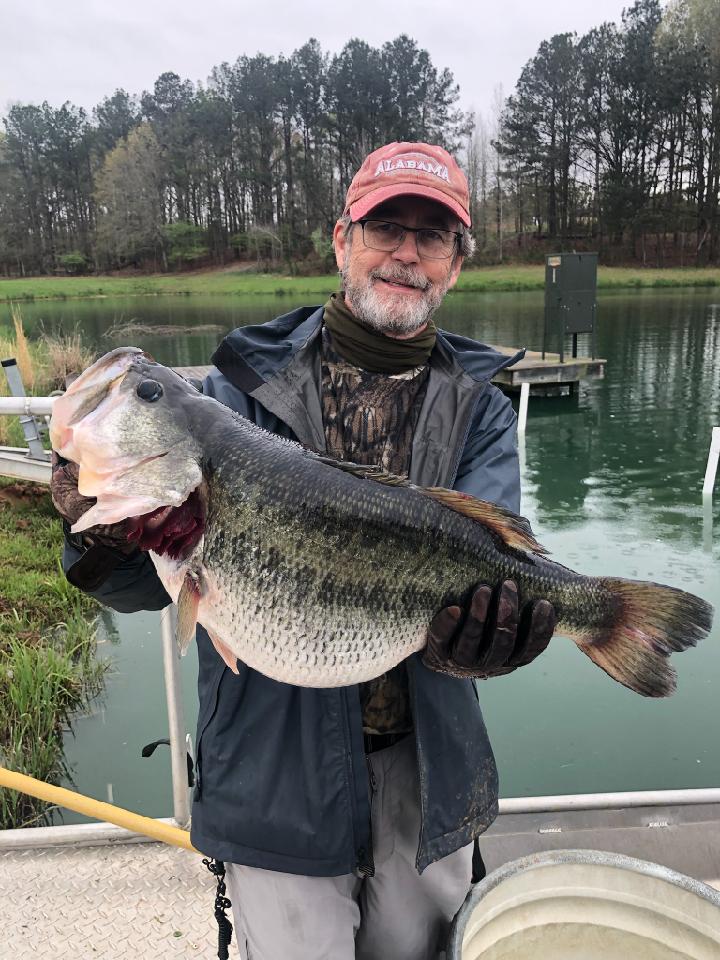
Four Founding Principles When Managing Trophy Fisheries
AS SEEN IN POND BOSS MAGAZINE
By Dave Beasley, Fisheries Biologist and Director of Fisheries Management
Growing trophy bass is incredibly rewarding. Over the years, lessons have been learned and strategies modified. Ongoing advancements in technology and science provide biologists with an improved opportunity to succeed. Although modern breakthroughs have helped, it is still challenging, creating an enjoyable backdrop for fisheries professionals to stay motivated.
Whether you are seasoned or new to trophy fish management, everyone has the opportunity to continue learning and become smarter. There is too much opportunity for improvement to become complacent. We are another decade away from really dialing in fisheries management to a point where it becomes routine and less challenging. Although it may be hard for some to comprehend how the industry will evolve to a point where trophy fish management is simple, recent breakthroughs have shed light on this reality headed our way.
Until recent advancements are further developed and taken mainstream, you need to operate with the understanding that your probabilities of success are lower than desired, and that you need a solid, data-driven, adaptive approach to accomplish your goals. You will benefit greatly from a strategy that provides the highest odds of success. Over the years, I have developed four founding principles that are at the center of my trophy fish management philosophy. Although this article is based around growing Largemouth Bass, you can apply these principles to any predator fish species.

Maintain the proper number of genetically superior predators relative to the waterbody’s productivity:
This is typically the most difficult principle to accomplish. Knowing the number of bass you have, their genetic potential, as well as how many pounds of forage the waterbody produces annually is incredibly hard to accomplish for most people. Starting with the predator headcount, it is paramount that you do not have too many bass. They are unable to reach trophy sizes if they do not have enough to eat. At the same time, too few bass will make fishing painfully slower and is an opportunity lost. My preference is to maintain female-dominant bass populations that lack natural bass recruitment.
Smaller waterbodies afford managers the luxury of managing individual bass, allowing them to really stay on top of their population. Depending on variables such as water depth and cover, I typically start managing age-classes (cohorts) of bass rather than individuals, at around 10 acres. With enough resources, you could manage the individual fish on larger waterbodies, but the effort required to do so can typically be better spent in other ways.
Thanks to recent advances, we can now test bass to assess their genetic potential. Analyzing a small tissue sample, such as a fin clip, for trophy DNA markers provides the foresight needed to ensure your young bass today have the genetics to reach your top-end growth goals in the future. This data point greatly improves your odds of success. It is much more efficient than the previous method – one would hope they had good genetics, and then years later find out if they did.
Accurately projecting the fishery’s productivity, in terms of how many pounds of forage fish the waterbody will produce in a given growing season, is a challenge. Having a strong aquaculture background helps significantly when trying to assess the biomass of fish in a waterbody. Raising bait in hatchery ponds year after year, and seining those waterbodies annually to harvest the fish grown, fosters both a knowledge set, as well as an instinctive ability to forecast how many pounds of forage you will likely produce. Since most people lack this knowledge, you either need to hire someone who has it, or try and calculate it yourself.
To project forage production, you want to have a good understanding of your predator population, as well as how the forage population is doing in the spring. Healthy water quality coupled with a good plankton bloom is important if trying to maximize forage production. How much fish feed is eaten will also need to be factored into your calculation. Using key data, you have the ability to start calibrating your forage production estimates. By teaming this information with the number of predators you have and how well they are performing, you can start setting yourself up to make educated decisions.
I encourage you to assume each mature bass needs 40 pounds of forage fish annually. Depending on a variety of variables, such as waterbody size, depth, water quality, flow rate, latitude, elevation, budget, etc., the biomass of forage fish you can produce will vary significantly. In many cases throughout the south, a well managed trophy fishery can produce 800-1,000 pounds of forage per acre annually. Doing the math, this means that most fisheries that are well managed should strive for 20-25 bass per acre, or less.

Congregate predators to enhance the angling experience and data collection:
Trophy fisheries have inherently low numbers of predator fish. Congregating them allows for higher catch rates, providing anglers with a more enjoyable experience while possibly spending less time on the water. For a great spring and fall bite, cover should ideally be maintained around the perimeter or in water less than six feet deep. When surface water temperatures are between 60 and 75 degrees, largemouth are oftentimes congregating near the perimeter or in shallow water. As water temperatures become warmer or colder, bass have a tendency to move deeper, seeking more favorable temperatures.
In most situations, I prefer minimal cover, which encourages bass to congregate as much as possible. If done well, it is common to collect 20-40 percent of the bass population when electrofishing small to mid-sized lakes and ponds. This critical data sets the stage for success. If we are able to collect this many bass electrofishing, anglers are also able to catch more when fishing.
Since largemouth are predictable, pushing into shallow water cover each spring and fall, we use this time to electrofish and collect the data needed to make accurate management decisions. Springtime, in particular, is incredibly predictable. Capitalizing on this predictability allows biologists to collect a large sample of the bass population, assuming the cover is ideal. Dialing in your cover is critical if trying to maximize your catch rates. With better catch rates, assumptions can be reduced, and probabilities of long-term success increase.

Minimize fish stress:
Fish under stress shift to survival mode, consume less forage, and even become vulnerable to parasites and diseases. This results in bass failing to meet their genetic potential. Water quality is oftentimes the most prevalent stressor, and typically involves thermal stress or low dissolved oxygen, although other parameters such as undesired pH are also common. Maintaining healthy water with dissolved oxygen at 100 percent saturation throughout the entire water column is ideal, and provides a great backdrop for fish to focus on growth.
Keep in mind that stress comes from a variety of sources, including over-handling by anglers, pressure from both otters and fish-eating birds, and toxin-producing golden and blue-green algae, to name a few. Minimizing stress on bass should be a primary focus.
Mitigate limiting factors and risks of failure:
This is typically the second most challenging principle. If you have been around fisheries management for a while, you can likely attest to the extensive ways that fisheries can fail. Many factors must align for a trophy fishery to succeed, but just one complication can lead to failure. Although rapid and widespread fish mortality leading to complete failure is a real concern, failure often presents itself in subtle, small incremental steps, each one reducing the top-end size potential for your bass. Sometimes, these failures only affect one size class of bass; other times, they can impact the entire population.
Complacency is common among landowners, assuming things will go to plan even when they think they are paying close attention. In many cases, people are satisfied with their successes, but lack awareness of how well their bass could have grown if the fishery was managed better. Although happiness and satisfaction are important, growing trophy fish is not a forgiving process, and there’s little room for complacency if you want high probabilities of success.
So why is failure common? Most of the time failure involves a lack of awareness. Unlike managing deer, where you can easily see details such as the quality and quantity of food present, when managing fish you lack easy access to key information. Sometimes the fisheries data you are using to make decisions is not representative. So not only do you lack key data, but you also end up trusting the inaccurate data you do have, leaving your bass vulnerable.
Often, the things that lead to complete failure are the same that lead to lower than desired top-end growth. Here are some examples to illustrate these failure points: drought, flooding, nuisance fish species, power failure, elevated nutrient levels, dense blue-green algae, nuisance aquatic vegetation, lack of primary productivity, overpopulated bass, underpopulated bass, poor genetics, bass small for their age, forage too large, insufficient biomasslf forage, otters, cormorants, and poachers, to name a few. The full list is extensive, and trophy fisheries are continually facing internal and external risks that are relentless.
Although trophy bass management is both complicated and potentially stressful, the challenging journey of learning and strategizing provides significant gratification when it works out. Watching bass grow up over years of hard work brings great joy and, in many cases, they are family pets. Whether you are just starting your journey, or have been navigating it for years, I encourage you to follow these four principles to enhance your odds of success. Even with a great deal of experience managing many trophy fisheries, it is difficult. In almost all circumstances, it makes sense to partner with a biologist to ensure the highest odds of success.
Build Your Dream Fishery
Contact Us to Grow Big Fish
SOLitude Lake Management is a nationwide environmental firm committed to providing sustainable solutions that improve water quality, enhance beauty and preserve natural resources.
SOLitude’s team of aquatic scientists specializes in the development and execution of customized lake, stormwater pond, wetland and fisheries management programs. Services include water quality testing and restoration, algae and aquatic weed control, installation and maintenance of fountains and aeration systems, shoreline erosion control, muck and sediment removal and invasive species management. SOLitude partners with homeowners associations, golf courses, private landowners, businesses and municipalities. SOLitude Lake Management is part of Rentokil, a leading business services company, operating across the United States, Canada and Puerto Rico.
For more information, visit SOLitude Lake Management at solitudelakemanagement.com, and connect on Facebook, LinkedIn and Twitter.









